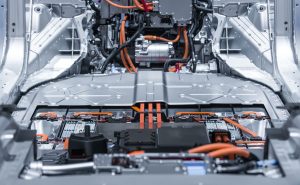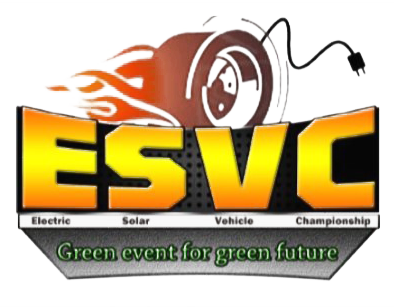An EV is simply an electric motor that is powered solely by the energy’s stored in batteries. Battery-powered vehicles lack noise pollution and do not release any toxins as in the case with engines powered by petrol.2. What are the top ten electric vehicles in the World?
The top ten electric vehicles in the world are as follows:
Hyundai Ioniq Electric
BMW i3
Tesla Model X
Volkswagon e-Golf
Renault Zoe
Tesla Model S
Nissan Leaf
Hyundai Kona Electric
Jaguar I-pace
Kia e-Niro
Enroll in our Electric Vehicle Course today and learn everything you need to know about these amazing vehicles!
10. What is a DC-DC Converter? (Trending Electric Vehicle Interview Questions)
A DC-DC converter, as the name indicates, transforms DC voltage into another device. It transforms the high-frequency direct current into a lower-frequency direct current and this power is used to hold the vehicle accessories.
12. What do you mean by electric vehicle engine?
The standard gasoline engine is replaced by an electric motor that is powered by electricity stored in rechargeable batteries.
A gasoline engine resembles a plumbing process with fuel, whereas an electric vehicle resembles a cabling operation with an electric motor.
15. Why are lithium-ion batteries used in Electric Vehicles?
(Trending Electric Vehicle Interview Questions)
Lithium-ion batteries are now used in the majority of EVs or electric automobiles due to their greater energy per unit mass when compared to alternative electrical energy storage systems.
They also have a higher power-to-weight ratio, appropriate high-temperature performance, higher energy efficiency, and reduced self-discharge.
16. What is an electric vehicle’s battery management system?
The BMS, or Battery Management System, plays a crucial role in Electric Vehicles. A BMS is required to monitor and maintain the battery pack for appropriate usage. The key responsibilities of BMS are as follows:
Cell balancing is the process of balancing the Soc and voltage of each cell.
The battery pack is protected against overcurrent, overvoltage, and Undervoltage circumstances.
Monitoring the temperature and isolating the BMS if it rises beyond a certain threshold.
Monitoring current, voltage, SoC (state of charge), and SoH (state of health) (state of health).
Effective charging and discharging.
17. Why are Electric Vehicles more expensive than fuel engines?
While Electric Vehicles have more moving components than diesel or gasoline vehicles, lithium-ion batteries are the most expensive component.
The lithium-ion battery pack accounts for more than half of the vehicle’s cost. Replacing or repairing batteries is costly, which is one of the reasons insurance payouts are greater.
19. However, some EVs still emit emissions, right?
In a way, yes. Pure Electric Vehicles (EVs) only produce pollutants when charged from an unsustainable power source. And, sure, Electric Vehicles emit more pollution during production than gasoline-powered vehicles due to the use of mined minerals and other manufacturing concerns.
21. How long will it take to charge the EV battery pack?

The main problem is that charging EVs is time-consuming. While drivers nowadays are accustomed to filling their gas tank or fuel tank in five minutes or less, EVs, depending on the scope and specifications of the battery, often take at least 30-40 minutes to charge to 80 percent at the fastest charging stations available.
Still, some research is being conducted on fast-charging stations and solar EVs.
22. What is the C rating of the battery in the Electric Vehicle?
A C-rate is a measurement of how quickly a battery may be depleted of its full capacity. A 1C rate means that the discharged current will completely deplete the battery in one hour.
This corresponds to a discharge of 100 Amps of electricity for a battery with a capacity of 100 Ah.
This battery has a 5C rate of 500 Amps and a C/2 rate of 50 Amps. Similarly, an E-rate reflects discharge power. A 1E rate is the discharge power required to completely drain a battery in one hour.
23. What are DTC and FOC in EVs?
Direct torque control (DTC) is a method used in variable-frequency drives to regulate the torque (and hence, eventually, the speed) of motors such as BLDC, PMSM, induction motors, and so on. This involves estimating the motor’s torque and magnetic flux based on the motor’s recorded current and voltage.
Field-Oriented Control (FOC), also known as vector control, is an approach for dealing with AC Induction Motors (ACIM) and Permanent Magnet Synchronous Motors (PMSM). Field-Oriented Control (FOC) provides effective management of maximum torque and speed ranges.
24. What exactly is cell balance and why is it necessary?
To maintain battery performance throughout a long service life in a large-format battery system, a charge-balancing strategy is usually necessary to account for variances in cell performance. An effective cell balancing system maintains the intended amount of battery output with an appropriate safety margin throughout the battery’s life without adding excessive expense, weight, or complexity.
Balancing is the process of equalizing the charge level in lithium-ion batteries cell by cell. Cell balancing may be accomplished in two ways: active cell balancing and passive cell balancing.
25. What is an Electric Vehicle’s pyro switch?
It is a high-voltage positive battery terminal fuse that explodes and permanently disconnects the electrical connection in the case of a vehicle accident or crash, preventing a short circuit or fire. At the same moment, the positive terminal of the battery is disconnected, causing the car to crash.
26. What exactly is an ECU in an Electric Vehicle?
In transportation technology, an Electronic Control Unit (ECU), sometimes known as an Electronic Control Module (ECM), is an embedded system that governs one or more electrical systems or subsystems of a vehicle.
An ECU receives data from various portions of the vehicle depending on its job. A door lock ECU takes input when a passenger hits the door lock/unlock button on a car door or a wireless key.
or example. Crash sensors and sensors that identify when someone is sitting in a certain seat would supply information to an airbag ECU. Furthermore, forward-facing radars that identify when the vehicle is approaching a barrier too rapidly would provide information to an automated emergency braking ECU.
27. How far can a normal EV go when it’s fully charged?
Currently, Electric Vehicles go roughly 250 miles on a charge, while certain Electric Vehicles, such as Teslas, can travel over 350 miles on a full charge. Several automakers have announced strategies to increase demand for Electric Vehicles that promise more range and faster charging.
Tata Motors has just introduced the Nexon EV Max, a revamped long-range configuration of the Nexon EV. It is available in XZ+ and XZ+ Lux models and has a licensed maximum driving range of 437 kilometers.
28. Is it true that all-Electric Vehicles use the same charger?
No, similar to how rival VHS and Betamax formats fought for dominance in the home video cassette market in the 1970s and 1980s, electric car charging outlets are presently available in a variety of shapes and sizes.
Because EVs are still in their early stages, what’s popular now may be obsolete in the future. Far from being a universal one-size-fits-all solution, there are three separate charging levels as well as four competing plug standards, the majority of which are incompatible with one another.
30. Can solar panels be used to charge an Electric Vehicle?
Yes, but the viability of charging an EV with solar panels is dependent on a variety of parameters, including average daily sunshine and solar panel configuration.
A house rooftop solar panel arrangement with proper charging equipment is one alternative for individuals who have enough sunshine and are ready to make the initial expenditure.
Unfortunately, solar panels do not currently provide enough energy to be put on an EV and used to charge it continually.
31. How can you determine how much battery power you still have?
An EV, like a fuel gauge warning light, will inform you how much charge is remaining on its battery and will alert you long before the next charge is required. Many EVs also have applications that may keep you aware of charging levels even when you’re not near your vehicle.
32. How much time does it take an EV to charge?
(Trending Electric Vehicle Interview Questions)
This is determined by the type of charging station you use, the amount of your EV’s battery, and how much you drive.
Regardless of the charging station, the maximum amount of electricity that an EV battery can handle always limits the rate at which it charges.
An EV with a 350 kW charger will charge faster at a DC fast charging station than a car with a 50 kW charger.
33. Don’t EV batteries degrade quite quickly?
Actually, no, not anymore.
In fact, some electric car batteries are guaranteed to last up to ten years or 150,000 miles.
In laboratory tests, the most recent battery technology has pushed 300,000 kilometers. That’s more than two decades of (usually) emission-free riding.
34. Are Electric Vehicles superior to conventional ones?
Despite popular belief, Electric Vehicles frequently outperform gasoline vehicles in a variety of ways.
While EV performance varies by make and model, all EVs benefit from drivetrains that are relatively basic in comparison to fuel-powered cars.
Furthermore, because EVs use battery-powered motors rather than gas-powered engines, they are substantially quieter in operation.
35. What is Nuclear Diamond Battery?
The nuclear diamond battery concept was presented by the University of Bristol Cabot Institute during its annual lecture on November 25, 2016; at the Wills Memorial Building.
This battery is designed to create modest quantities of power for thousands of years by utilizing the radioactivity of scrap graphite blocks (formerly used as neutron moderator material in graphite-moderated reactors).
The battery is a betavoltaic cell that uses diamond-like carbon (DLC) to store carbon-14 (14C) and create the requisite semiconductor junction. Additional normal-carbon DLC is used to produce the semiconductor junction.
Conclusion for Electric Vehicle Interview Questions
I hope reviewing these commonly asked Electric Vehicle Interview Questions gives you a solid foundation to prepare and build confidence. ISIEINDIA offers a well-rounded EV Course Certified from NSDC.
Reach out to executive of ISIEINDIA to further prepare and get helpful tips and insights. Best of luck for your interview!


 Battery Electric Vehicle operates only on electricity. It is made by a high voltage battery that transforms the alternating current into the direct current to handle the power electronics.
Battery Electric Vehicle operates only on electricity. It is made by a high voltage battery that transforms the alternating current into the direct current to handle the power electronics.
